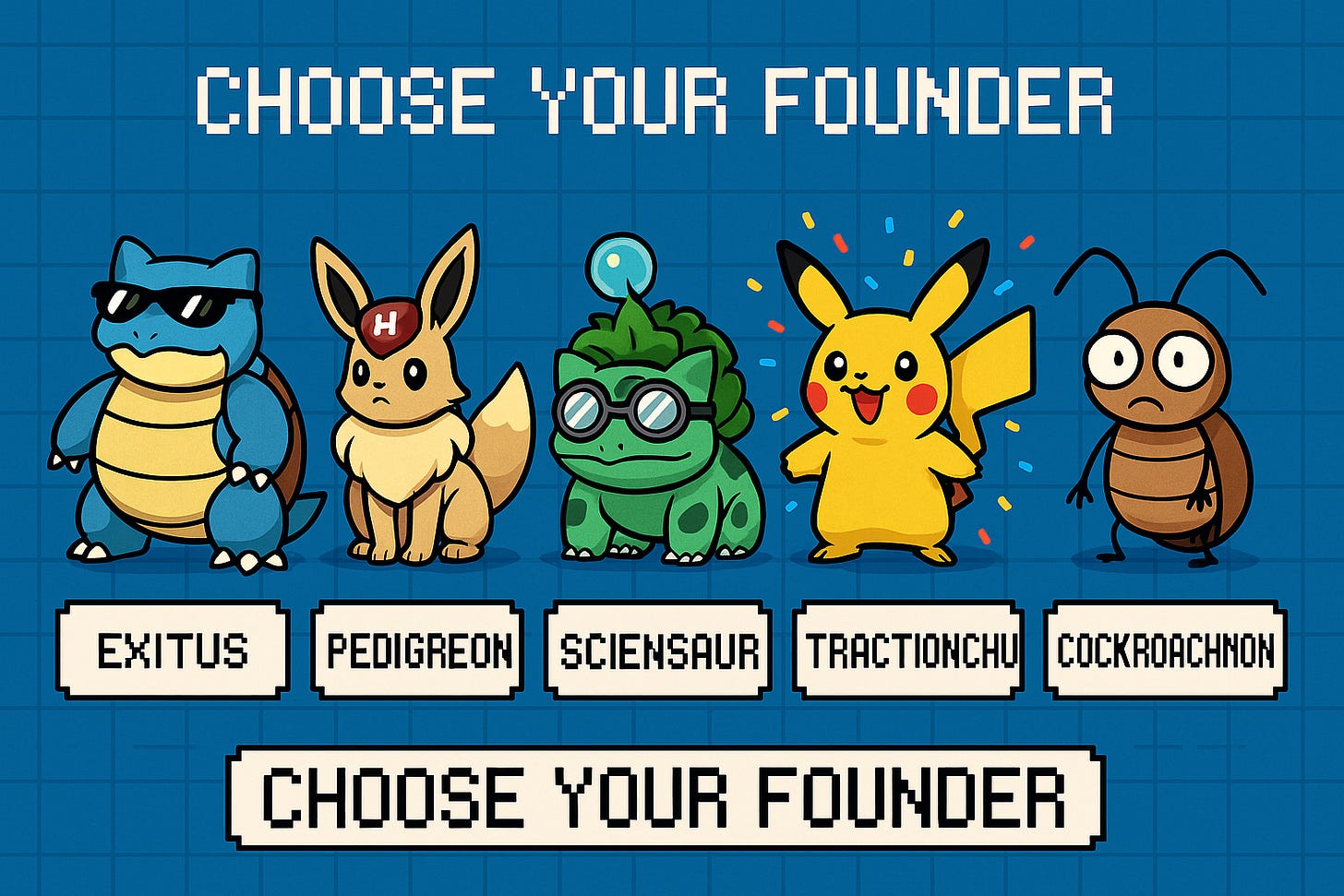The 4+1 HealthTech Teams That Get Funded
Here’s something I’ve learned after four years at Verge, where we have seen close to 2,600 healthtech startups and invested in only 15 (so far). It's the kind of insight I wish I had back when I was a first-time founder, sitting on the other side of the table wondering:
“Why did they get funded and not us?”
It’s easy to look at a funding announcement on TechCrunch or Sifted and assume it was all clean, quick, and obvious. But I was always more interested in the messy middle.
Who set up the first call?
How long had they known each other?
Was it a lucky cold email or a ten-month slow dance at events?
And—bluntly—why them?
Because back when I was a founder, I’d read these headlines and feel a mix of confusion and jealousy. Were they better? Was their traction that much stronger? Or was there some secret sauce I was missing?
Spoiler alert: there’s no single sauce, but there are patterns.
So, when preparing for a local healthtech founder meetup a few months ago, I tried to bucket the teams I’ve seen get funded at early stage into something helpful for first-time founders. Call it the “4+1”
Why not just “5 teams”? Because the first 4 get funded for predictable reasons, and everyone else falls into bucket 5—which still gets funded, just with a very different playbook.
Let’s break it down.
Bucket #1: The Exited Team
Shortcut: Credibility.
This one’s simple. If you’ve built and exited a startup before—even if it wasn’t in healthtech—you’re seen as “fundable by default.” You’ve played (and won) the game.
Investors don’t need a 12-slide deck to believe in your potential. They’re already watching for what you’ll do next.
If that’s not you? Cool. Let’s move on.
Bucket #2: The Shiny Pedigree Team
Shortcut: Brand gravity.
You’re ex-OpenAI, ex-Scale AI, or you’ve got a PhD from MIT, Oxford, or the holy trinity of Stanford–Harvard–Y Combinator. Congrats—you get meetings. People assume you’re brilliant until proven otherwise.
This doesn’t mean you’re guaranteed a term sheet. But it does mean you get in the room faster.
If your LinkedIn says “University of RISEBA” (👋 hi, that’s me)—you’re not in this bucket. And that’s okay. Know what game you’re playing.
Bucket #3: The Groundbreaking Science Team
Shortcut: Moonshots.
Here’s the VC version of a simple test: Did you cure cancer? Yes or no.
Or maybe you discovered cold fusion. Or developed a generalizable AI that makes GPT-4 look like Clippy. You’ve built something so extraordinary makes reality bend a little just to keep up.
Everything else? Still impressive, sure. But from a simplified VC lens—it’s not groundbreaking. It’s incremental.
This might sound harsh, but better to be honest than go in with rose-tinted glasses and leave with a bruise on your fundraising ego.
Ask yourself: is this science or tech truly paradigm-shifting? If not, we’ve still got two buckets to go.
Bucket #4: The Viral Traction Team
Shortcut: Obvious momentum.
You built something people can’t stop using. It’s growing so fast that even a toddler in a Patagonia vest would wire you the money.
In this bucket, you don’t pitch investors—they pitch you.
Revenue is climbing. User growth is compounding. Everyone’s sharing your app in WhatsApp groups and doctor forums. Even if the tech’s a black box, the trend line is loud and clear—and that’s enough
The catch? Every founder thinks they’re in this bucket.
But if you’re not already viral at the time you’re raising, it’s a no. Not a “maybe.” Not a “soon.” It’s binary.
Bucket #5: The Cockroach / Best Friend Next Door Team
Shortcut: Time + trust.
If you didn’t tick any of the four buckets above—this is yours. And that’s not a bad thing.
This bucket is filled with teams that are resilient, humble, and hard to kill. They didn’t go viral, didn’t drop out of Stanford, and didn’t discover a new protein folding method. But they stuck around.
They built slowly. Listened. Showed up. Got told “no” more times than they can count—but kept going.
And eventually, those “no’s” turned into “maybe’s”, then “hmm okay,” and finally:
“F** yeah, let’s go!”
If you’re in this bucket, just know: the rules are different. You’ll need to…
Reach out 6–9 months before your round
Build relationships before you need the check
Make yourself visible—at events, online, in updates
Let people see your progress over time
It’s not glamorous. It’s not fast. But I’ve seen it work—over and over again.
TL;DR Recap: The 4+1 Teams That Get Funded
The Exited Team – They've done it before. They get funded again.
The Shiny Pedigree Team – Big logos open small doors.
The Groundbreaking Science Team – Built something so wild it can’t be ignored.
The Viral Traction Team – Metrics so obvious even your grandma’s angel syndicate is calling.
The Cockroach / Best Friend Team – The rest of us. No shortcuts. Just time, grit, and persistence.
Final Thoughts
Any team can get funded. But not every team is playing the same game. The most useful thing you can do as a founder is ask: “Which bucket are we in—really?” Then adjust your strategy accordingly.
Back when I was a founder, I was so bad at fundraising I couldn’t raise even in zero interest days. So I won’t pretend to have all the answers.
But I can tell you this: I’ve seen what works, what doesn’t, and what founders often get wrong.
As Sun Tzu said: “Know your enemy and know yourself, and you need not fear the result of a hundred battles.”
In this game, your enemy is self-delusion.
Cheers,
S.






